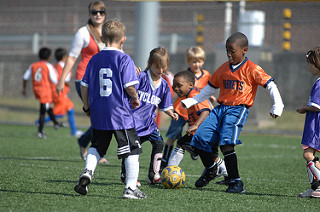 After almost two generations of declining emphasis on the arts in public schools we face communities largely made up of people who have little or no experience participating in the arts. Where once large percentages of students sang, played in band, acted on stage, painted and made murals, and/or took private music lessons outside of school, today that is no longer the case. This is certainly not the only obstacle arts organizations face in drawing people in to performances and exhibitions but it makes the task far more difficult.
After almost two generations of declining emphasis on the arts in public schools we face communities largely made up of people who have little or no experience participating in the arts. Where once large percentages of students sang, played in band, acted on stage, painted and made murals, and/or took private music lessons outside of school, today that is no longer the case. This is certainly not the only obstacle arts organizations face in drawing people in to performances and exhibitions but it makes the task far more difficult.
People with participatory experience in something are more likely to support those activities even when they are not doing them themselves. Familiarity often breeds understanding and appreciation. The incredible rise in U.S. support of soccer can, I am confident, be directly tied to the long-standing and pervasive presence of children’s soccer leagues in middle and upper class communities. Those children grow up, take their children to weekend games, understand (sort of) the Offside Rule, and are ready to be impressed by the skill of professionals from around the world. This rise of soccer has been meteoric considered in a social systems time-frame. I have witnessed the entire transformation in my own lifetime. When I was in junior high in the Midwest, the gym teacher brought a funny size white ball to class and tried to explain a game where only one player on each team could touch that ball with their hands. (Yes, except for throw ins.) What kind of a game was that?!! (For a good deal more on this, see Barry Hessenius’s blog post on the topic.)
What does all of this have to do with community engagement? At the risk of stating the obvious, arts participation is about as significant a way to build relationships between people and arts organization as I can imagine. And right now there seems to be a demonstrable hunger for such activities. When breweries and wine bars have discovered that opportunities to paint and drink make a good deal of money, it’s time for arts organizations to take notice. Yes, I know we are not talking about sophisticated art making; but we are talking about something that can be a small step toward undoing the damage that the arts’ absence from the public schools has done and significantly increasing our pool of potential supporters.
Not every arts organization needs to become a specialist in presenting participatory arts activities. Some will choose to say it’s inconsistent with their mission, although I will continue to question what the mission is if it does not include connecting more people with art.
I sometimes say no organization needs to feel it must have a planned giving program in place, but if it doesn’t it is missing out on an important opportunity. Similarly, I think any arts organization that does not at least consider adding participatory activities to its offerings is passing on the potential to connect with significant numbers of people. The work is good for the organization and for the participants. And our industry as a whole is in desperate need of larger percentages of the population “doing” the arts.
Over the next few weeks I will be presenting some examples of arts organizations creating opportunities for people to have hands on experiences in the arts. Perhaps they will encourage emulation not of the specific programs but of the idea of creating participatory activities.
Engage!
Doug
Photo:![]() Some rights reserved by USAG-Humphreys
Some rights reserved by USAG-Humphreys

[…] Doin’ It After almost two generations of declining emphasis on the arts in public schools we face communities largely made up of people who have little or no experience participating in the arts. Where once large percentages … read more AJBlog: Engaging Matters Published 2017-03-28 “Emet” & Emmett: Why Truth-Telling (like Schutz’s) about Till’s Murder Should Be Ecumenical The Whitney Museum has now composed what is, to my mind, the most succinct, sagacious response to the firestorm of castigation, pontification and rationalization swirling around Dana Schutz‘s powerful Open Casket at the […] Read More […]